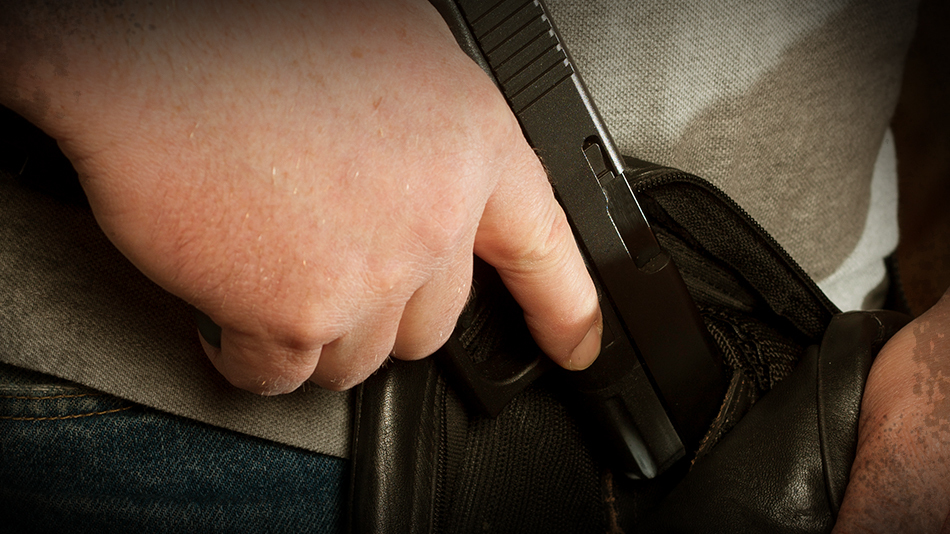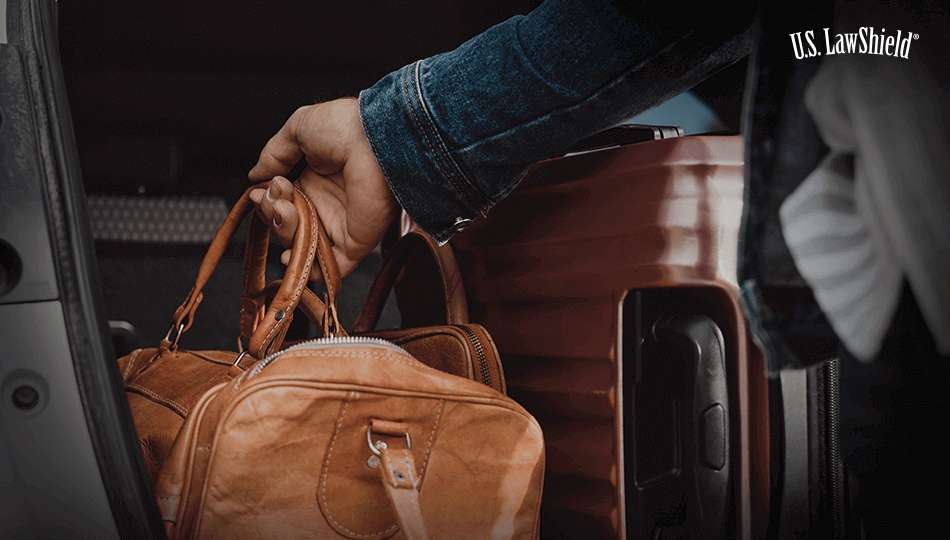
Gun owners sometimes carry in areas that might seem surprising to those outside the firearms world. In fact, before 2021 was even halfway over, there were 14 arrests reported at Disney World because guests had been carrying their guns even though it’s prohibited in the park. Why do people carry guns in areas they aren’t allowed? Reasons vary, but some of the ways people carry, and the locations where they are carried, are definitely unexpected. These are just a few of them.
But first, a disclaimer. Claiming ignorance of the law is not a legal defense. Knowing the laws and following them is part of being a law-abiding, responsible gun owner. We do not suggest or endorse carrying your gun in places where it’s prohibited; in fact, we’re telling you not to do it. Be smart. Be safe.
Law Enforcement Finds
You might think we’re going to delve into guns found inside the human body, but we aren’t. Police find guns in all sorts of strange places outside the human body. For example, Police1 reported that a law enforcement officer found a gun stuffed in a diaper bag strapped across a woman’s shoulders. The woman in question was carrying her baby and walking into a courtroom, a commonly prohibited location, with the diaper bag—making it both foolish andillegal. It’s common for guns to be left unattended when being carried using other off-body methods such as purses, totes, fanny packs, and backpacks. If you’re going to carry off-body, it’s vital to follow safe carry practices and maintain control of the bag at all times.
Other places police officers have found firearms include under a wig on a person’s head; in a freezer, wrapped in foil and hidden under frozen fish; and among children’s toys, disguised as a NERF gun.
“Oops” Carry Moments
People carrying unholstered guns at the small of their back have dropped them at the grocery store, in line at the bank, at the gas station, and so on. The guns usually fall harmlessly to the floor, but sometimes they fire. Even guns that should be “drop safe” might fall in just the right way for a negligent discharge to happen.
A holstered gun can sometimes fall, too, because the holster may not be made for the gun or it’s just a poorly made holster. There’s nothing concealed or safe about a gun that randomly clatters to the ground.
Safe Carry Methods
Carrying your gun safely and according to local laws is your responsibility as a gun owner. It doesn’t matter if you carry openly or concealed; do it safely. That means you should have a good quality gun belt, a well-made holster, and an understanding of where and how to carry.
When choosing a holster, you want one with the following features:
- Retention: The holster should hold your gun firmly in place. Levels of retention vary by holster, but as a general rule, you want a holster your gun will stay in even when the holster is shaken or turned upside down.
- Trigger guard coverage: The gun’s trigger guard should be covered by the holster, which prevents the trigger from being accidentally touched.
- No trigger interference: Some holster models may cause trigger interference. A holster designed so that part of it hooks into the trigger guard or hook in as the gun is drawn can create an unsafe situation.
- Stiff, unbending material: The holster should be made from material that holds its shape with use so it cannot fold or bunch up. Look for something like premium leather or Kydex, not nylon.
- Molded shape: The holster should be molded to the shape of your specific gun. Holsters aren’t meant to be like baggy sleeves that the gun flops and shifts around in.
- Open mouth: The top of your holster where the gun is inserted should retain its shape even when it’s empty and on your waistband. Keeping the mouth open makes holstering easier and safer. Using the muzzle of your gun to wiggle the mouth open or sticking your fingers in front of the muzzle to open the mouth so the gun can go in aren’t safe practices at all.
Your holster is significantly less effective without a quality gun belt. A good gun belt should be thick and solid enough to hold up your holstered gun without bending, twisting, or sagging. That means the belts you buy at clothing stores generally won’t work; even belts advertised as “work belts” may not be sufficient. Without the right gun belt, you won’t be as safe or comfortable when you carry. This practice is advocated for and taught throughout the gun world, including by seasoned defensive handgun instructor Tom Walls, who states “use of a quality gun belt and proper, belt-mounted holster is the firearms industry standard and part of the required gear for all major firearms academies.”
Legalities of Carry
The laws surrounding open or concealed carry vary by state, occasionally by city, and sometimes even by property ownership (i.e. federal premises). It’s your job as a law-abiding gun owner to know those laws for every location you intend to take your gun.
Some places that are generally illegal for carry in many states shouldn’t surprise you:
- Schools
- Bars
- Courthouses
- Jails
- Secure areas of airports
- Certain government buildings
- Polling places
Places that are sometimes illegal for carry in many states may surprise you:
- Churches
- Restaurants
- Hospitals
- Daycares
- Nursing homes
- Any business with the proper prohibitive or Penal Code signs posted
- National and state parks
- Amusement parks
- Rodeo grounds
- Concerts
- Boats on public water
These aren’t complete lists, and the laws vary depending on where you live. Do your homework and get to know the gun laws where you live, work, and travel. If you’re planning a family vacation to Disney World, you should have already checked to see if they allow guns on their property (spoiler: they don’t). Claiming ignorance of the law not a valid legal defense, and neither is simply hoping you won’t get caught. Carry lawfully and safely, no matter how tempting it might be to throw your gun under your hat when you get on the roller coaster.
The information provided in this publication is intended to provide general information to individuals and is not legal advice. The information included in this publication may not be quoted or referred to in any other publication without the prior written consent of U.S. LawShield, to be given or withheld at our discretion. The information is not a substitute for, and does not replace the advice or representation of a licensed attorney. We strive to ensure the information included in this publication is accurate and current, however, no claim is made to the accuracy of the information and we are not responsible for any consequences that may result from the use of information in this publication. The use of this publication does not create an attorney-client relationship between U.S. LawShield, any independent program attorney, and any individual.




I am part of security ministry at my church and I carry conceal it that ok I’m in Florida